Winnie Harlow On Diversity In Fashion: "It’s Like Shock Value, or a Trend"
Fashion is finally embracing difference and diversity—but too many in the industry are doing it just because it’s on-trend, says model Winnie Harlow. By Alison de Souza
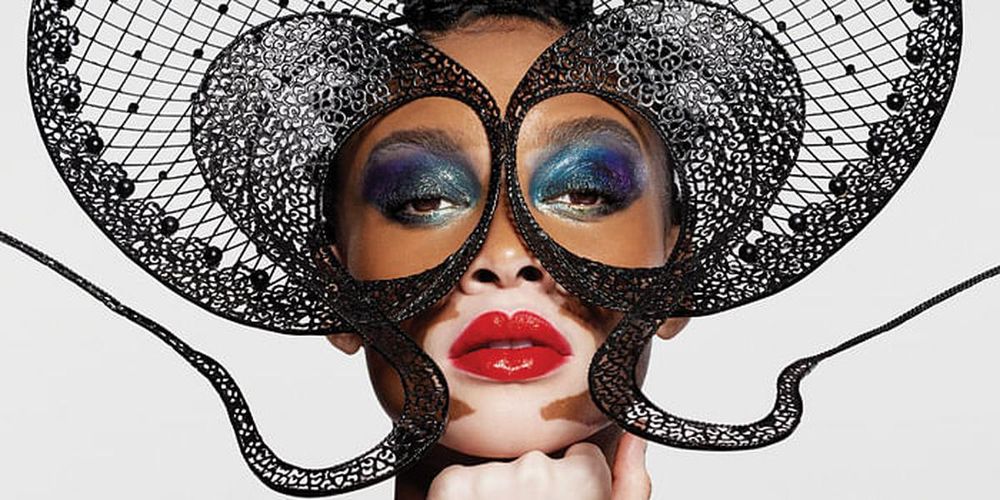

Stretch cotton dress, Dolce & Gabbana. Metal headdress, Rinaldy Yunardi at The Residency Experience. White gold and diamond Love bracelet; white gold triple loop Panthère de Cartier watch, Cartier
Winnie Harlow
Diversity is bang on-trend these days. And if a contradiction could sum up the complexities of the fashion industry, it’s that a business built in no small part on being an exclusive inner circle is finally seeing the upside of embracing difference, from plus-size to gender non-binary and every stripe in between.
But one of the poster children for this movement, Canadian model Winnie Harlow, is calling it to account. Diversity shouldn’t just be the flavour of the month, and yet that is precisely what it often boils down to, she tells Harper’s Bazaar Singapore—despite the industry patting itself on its back for being more inclusive in recent years.
Discovered on Instagram by America’s Next Top Model creator Tyra Banks, the 23-year-old, who has the skin depigmentation condition known as vitiligo, appeared on the 21st cycle of the reality series in 2014. Competing under her real name, Chantelle Brown-Young, she didn’t win, but emerged as a fan favourite and one of the series’ most bankable stars. Hired to front brands such as Diesel and Desigual, and walk the runways for Dior and Marc Jacobs, Harlow is now one of the world’s most recognisable models, often credited with helping change the face of fashion with her unconventional beauty. But she astutely notes that in many respects, she remains the exception that proves the rule.
At our cover shoot in Los Angeles, the model observes that because diversity is the buzzword du jour, it is not uncommon for fashion houses and media to pay lip-service to it for a single shoot, campaign or season, then quietly go back to their retrograde ways. Thus, while the industry has taken steps towards being more inclusive, “it still has a ways to go”, she concludes. “It’s really about people opening their minds, not just for a season, a trend or a show but, like, actually properly diversifying.
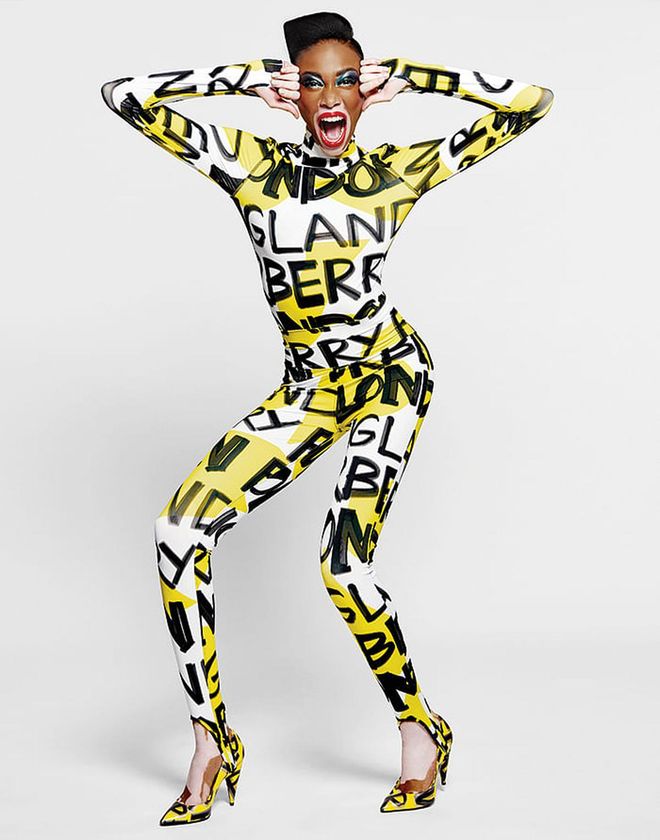
Lycra bodysuit; Lycra leggings; leather pumps, Burberry
Winnie Harlow
“I’m proud of the recent changes being made in the realms of fashion and beauty. It’s amazing to be among the wave of rule breakers for diversity. I keep hearing this term ‘new norm’ but really, this was always the norm; it’s just beautiful that it’s finally coming to light.”
Even then, a star like Harlow still experiences discrimination in the business, where hiring her is seen as a creative and commercial risk. Conversely, when one of her campaigns does well, everyone then clamours to work with her; including those who rejected her before, she reveals with a laugh.
Thus, it is a mistake to simply assume progress will keep marching forward. Harlow cites a report showing the proportion of people of colour on covers of leading American fashion publications actually dropped in 2017 compared to 2016. “How is it reversing rather than growing?” she says incredulously. “I feel like until the number of diverse models that are on covers is equal to the number of white girls on covers every year, we have work to do.”
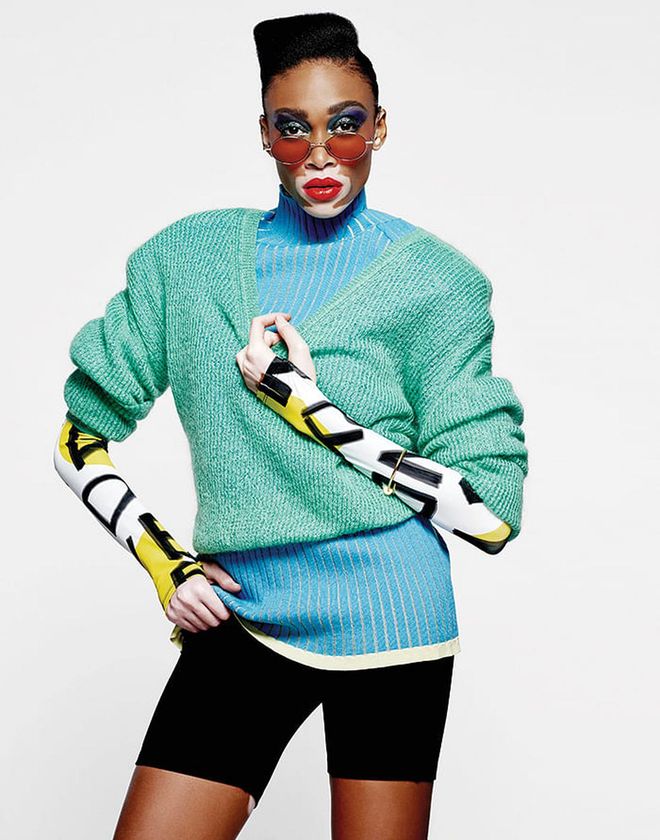
Mohair sweater; knit turtleneck top; Lycra bodysuit; stretch cotton bike shorts, Burberry. Metal sunglasses, Gentle Monster. Gold Juste un Clou bracelet, Cartier
Winnie Harlow
She has given the psychology behind this backsliding some thought. “I find the reason why it sometimes goes forward and then backwards is because people are, like, ‘Okay, cool, I’m going to put a whatever model on the cover to make a difference, and then next season it’s right back to the same thing’, you know? Which isn’t diversifying; it’s like shock value, or a trend,” says the London-based model.
And while it is well and good to put more unconventional models on magazine covers or runways, the industry often overlooks the finer points, especially in how it deals with non-white hair and skin tones. Harlow grows animated talking about the latter—it turns out she is something of a makeup ninja, expert at blending products for her skin tones, and often more adept than the professionals hired to do it for her. ‘When I was younger, there was still no such thing as darker shades. Once I reached high school was when they started with a little here and there, and now it’s (even more of) a big change from five years ago.
“But a lot of brands still have a way to go,” she says—an observation that proves prescient, coming just before the outcry over Kim Kardashian’s new makeup line, an ad for which shows a black model with 16 shades of concealer dabbed on her arm, none of them dark enough for her own skin. Staring at a shelf of makeup clearly not made with you in mind is something many Asian shoppers can relate to, as can anyone whose skin tone falls outside the standard-issue “Western” palette. “Some brands are really understanding that it’s discrimination (not to have more shades). And it is, period,” she says emphatically.
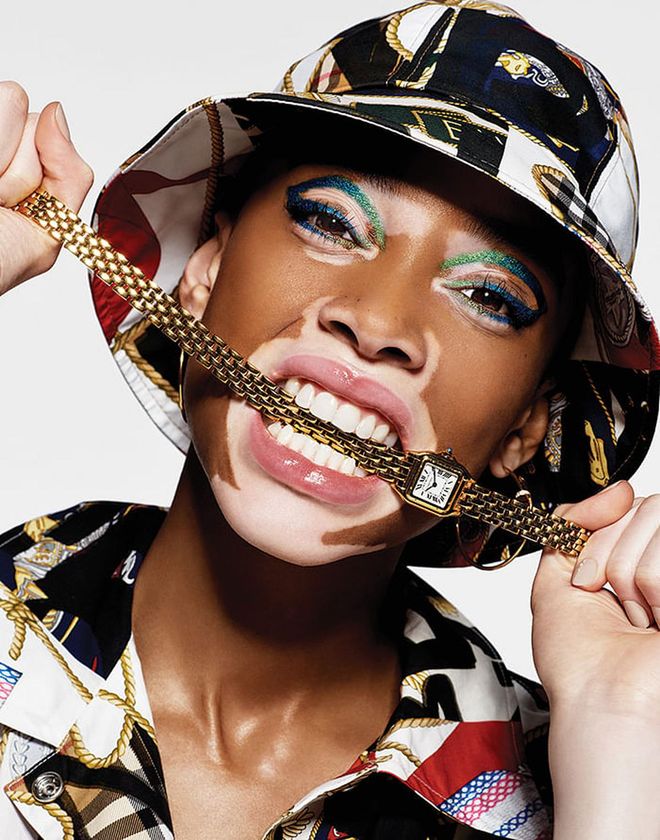
Cotton jumpsuit; cotton bucket hat, Burberry. Gold Juste un Clou earrings; gold double loop Panthère de Cartier watch, Cartier
Winnie Harlow
Because of her outspokenness on these and other issues—whether she is taking a stand against the anti-immigration policies of the current American government, or sharing her experiences of being bullied as a child—Harlow has come to represent much more than a gorgeous face.
On social media platforms like Instagram, where she has three million followers, fans far and wide tell her how much she means to them. “I get a lot of fan art. People have tattoos of my face on their body and I’m like, ‘Whoa, cool.’ They say I’ve inspired them. And that, like, they were scared to wear a bikini, but learned to embrace their confidence because I embraced mine. “I think they are inspired by the idea of me and my confidence and not my face, you know?”
It is not lost on her that she has become a role model, but Harlow has made a conscious decision to not feel unduly burdened by the mantle. “I think it’s whether you put the pressure on yourself to be a role model. I don’t. I’m human like everyone else,” she says matter-of-factly. “We all do amazing things; we all do stupid things.”
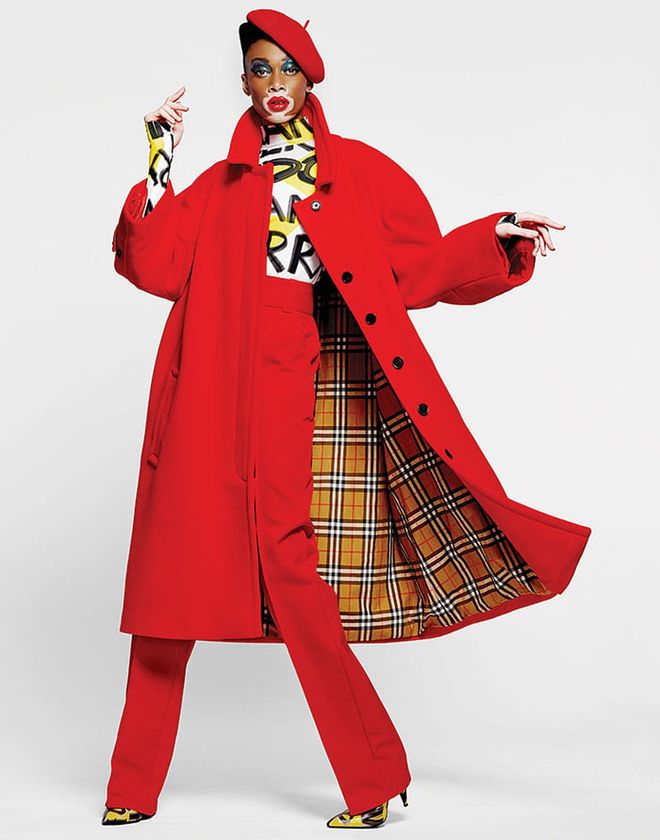
Wool coat; Lycra bodysuit; wool pants; leather pumps, Burberry. Wool beret, stylist’s own
Winnie Harlow
She has also grown weary of the conversation always coming back to her skin condition, which she refuses to be defined by. When this interviewer asks what she would say to those who want to be as confident as she is, she says: “First, I want to thank you for saying, ‘What would you say to people in general?’ Because a lot of times in interviews I’m asked, ‘What would you say to other people with vitiligo?’ and it’s not about that.
“But I would say something I always say to myself and to others, which is: Don’t focus on other people’s opinions of you, focus on yourself and your opinion of yourself. Because that’s the only person you really need to please—you and God. So just be happy with yourself.”
Photographed by Yu Tsai
Styled by Windy Aulia
Makeup: Rachel Goodwin/Streeters
Hair: Makeba Lindsay
Manicure: Erin Moffett/Opus Beauty
Production: 88 Phases
Producer: Trever Swearingen
Digital imaging: Luis Jaime
Digital technician: Massimo Campana
Photography assistants: Robiee Ziegler, Frankie Carino
Styling assistant: Austin Wittick